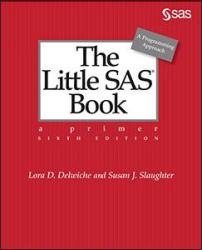I asked Matthew Slaughter to briefly explain what SAS Viya is. Here is his answer:
There are many different products marketed under the label of “Viya,” and it’s not always clear how they relate to each other or how SAS Viya is different from previous versions of SAS. In a nutshell, SAS Viya is the version of SAS which runs on CAS. This begs the next question….
What is CAS?
CAS stands for “Cloud Analytic Services” and is the name of a massively parallel-processing platform for fast in-memory analytics on big data, with dynamic spillover to disk when data sets (also called data tables) get larger than available memory.
Traditional SAS reads data to and from disk row by row, which is potentially slow, but minimizes the amount of memory needed at any point in time which is why it scales well. (People comparing Viya to traditional SAS often refer to “SAS 9,” but SAS has always worked this way.)
Competing analytical tools are often designed to load entire data sets into memory all at once, which can be faster but will slow down and eventually fail as the size of a data set grows and exceeds the available memory.
CAS provides a “best of both worlds” approach, where large data sets can be loaded entirely into memory but will transition to disk-based processing automatically as needed.
The many faces of SAS Viya
The common element of all of the products included in Viya is that they all have the ability to use CAS as the underlying analytic engine. This includes point-and-click products such as SAS Visual Analytics and SAS Visual Statistics, but it also includes traditional SAS code running in CAS. In many cases the only change needed to make a SAS program take advantage of Viya is to point it at a CAS data set. Viya also includes R and Python packages which allow programmers to manipulate CAS data sets using those languages. Viya has its own environment for instructors and students called SAS Viya for Learners which is separate from SAS OnDemand for Academics which uses SAS 9.
 Earlier this year we quietly updated
Earlier this year we quietly updated